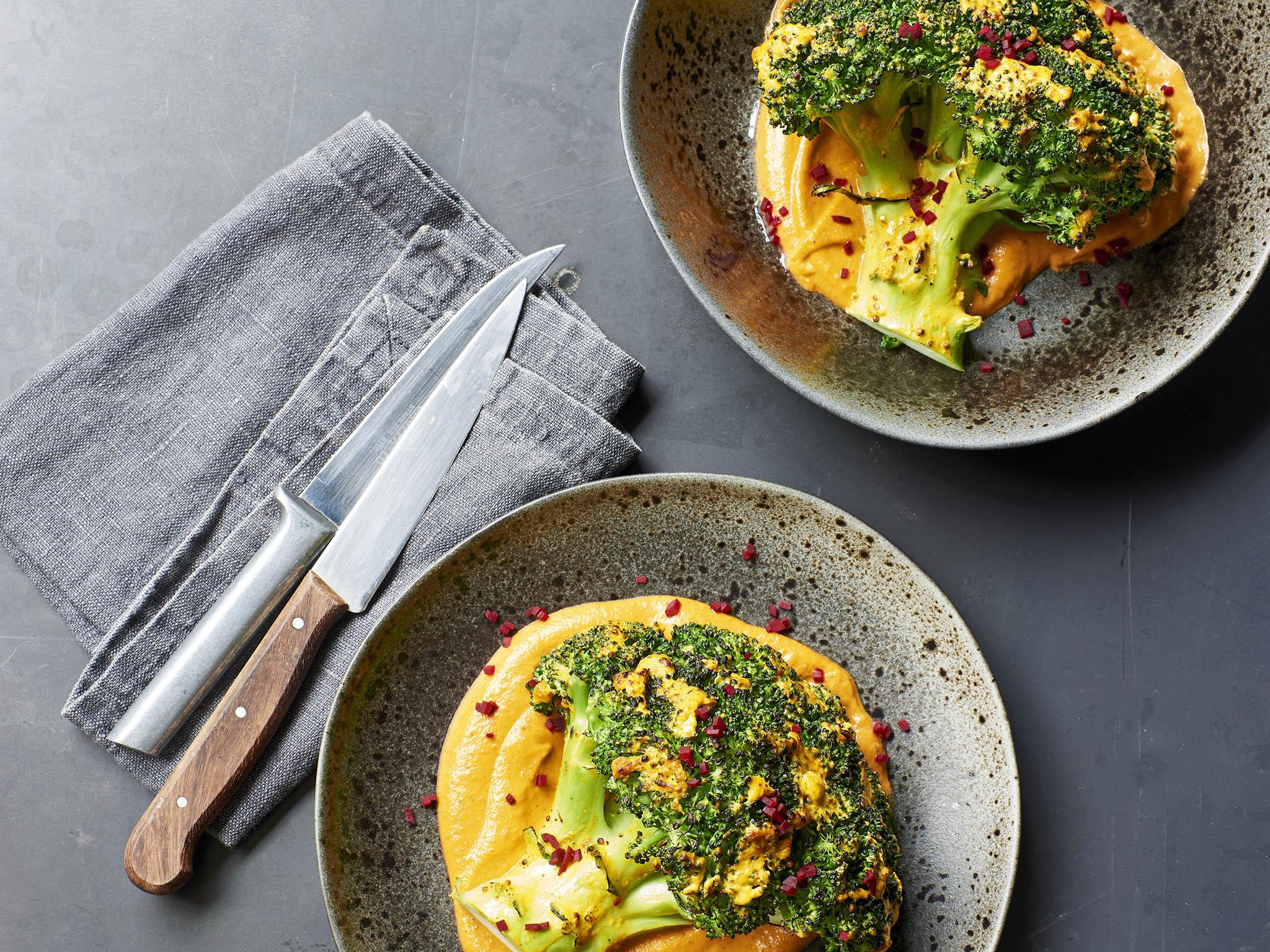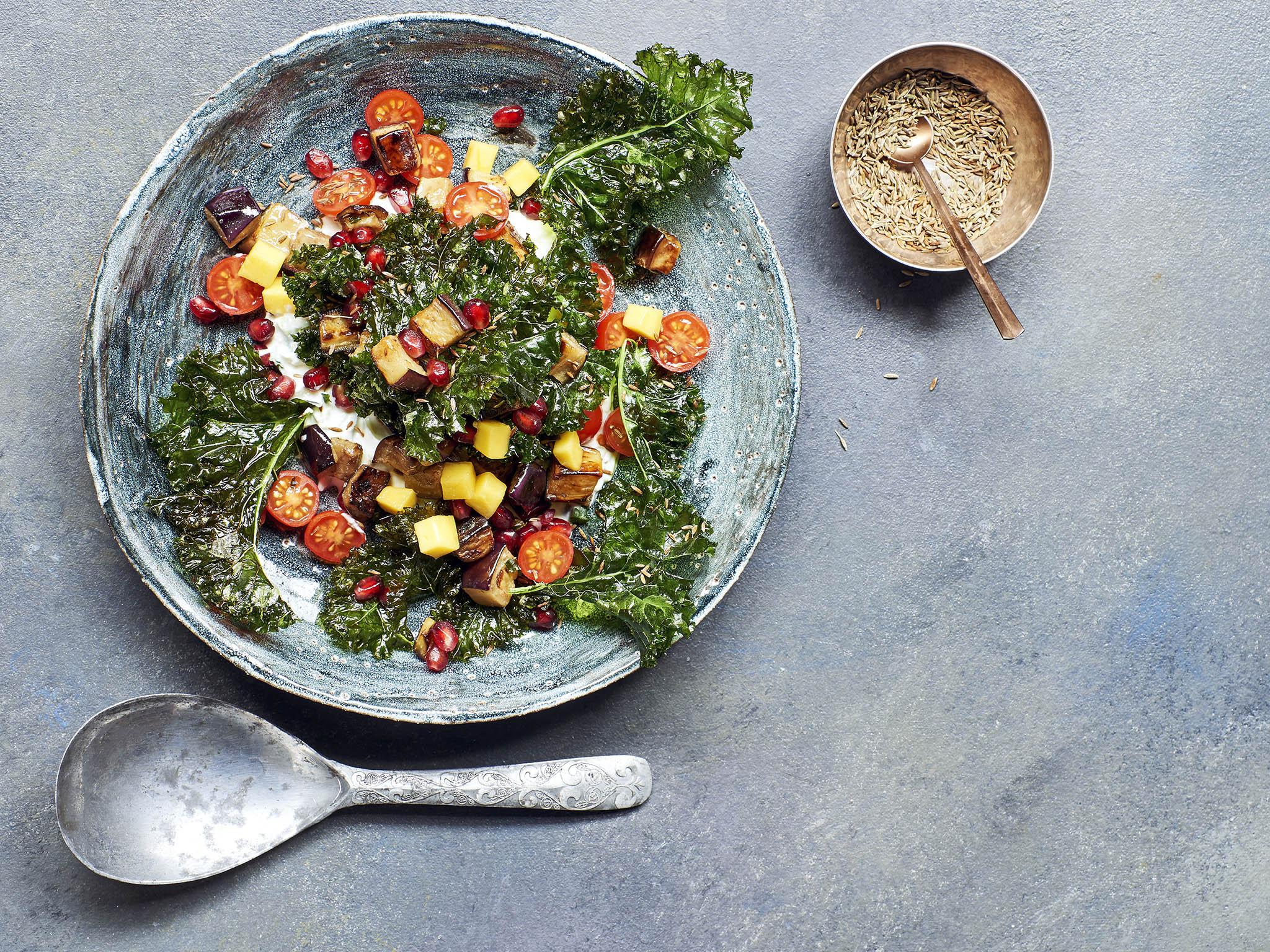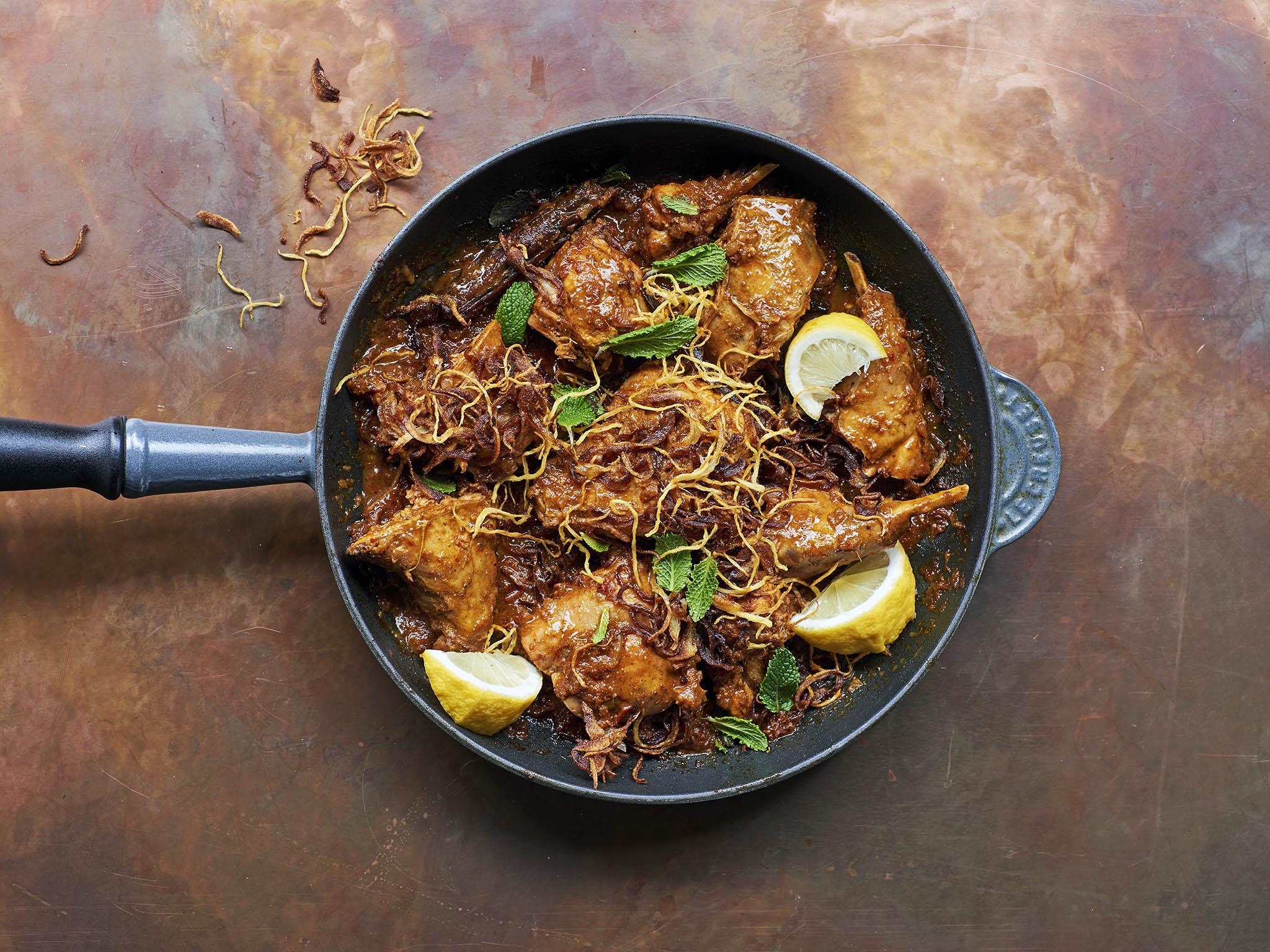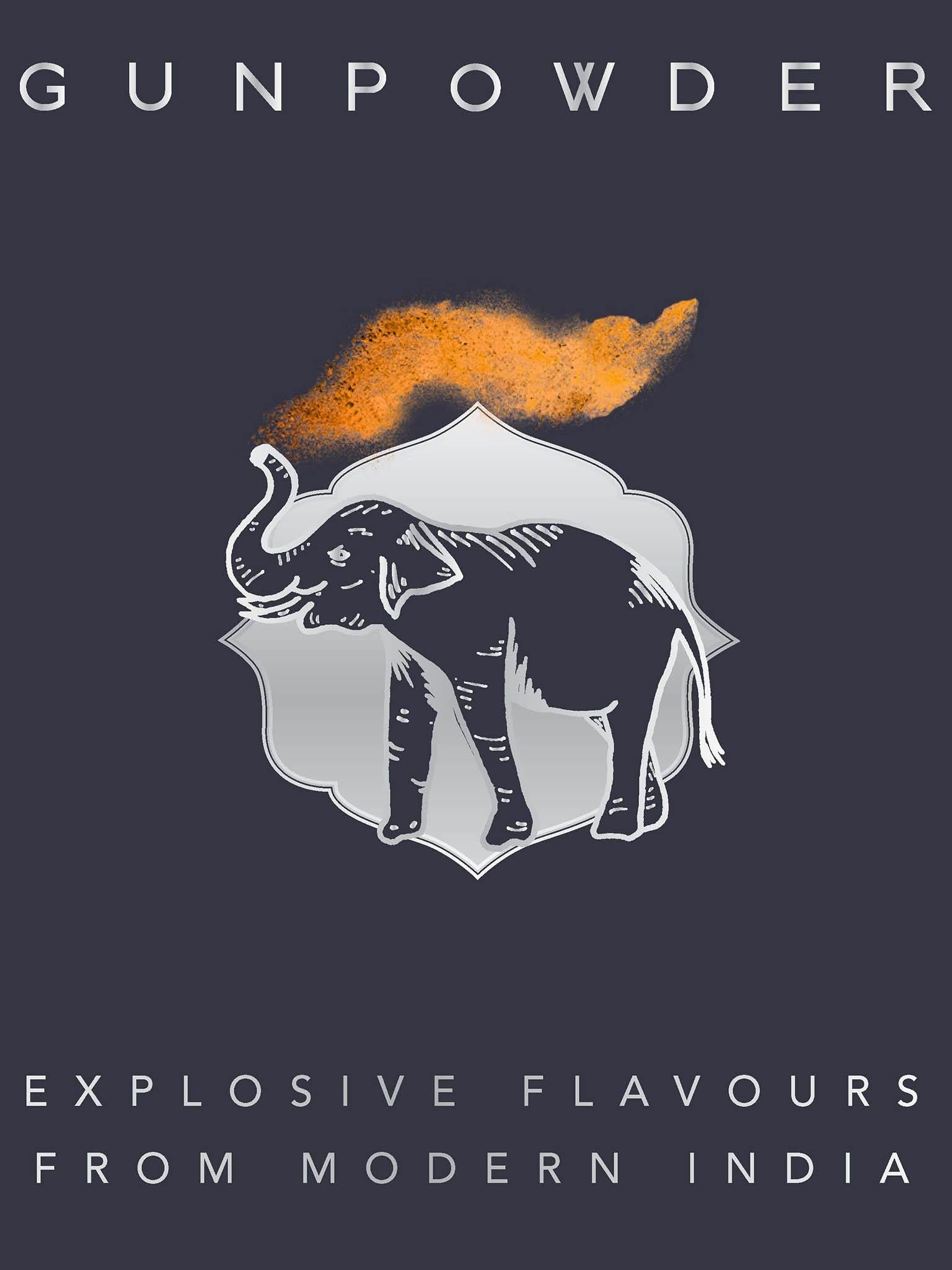Gunpowder cookbook: Recipes from mustard broccoli to kosbadi rabbit masala
The restaurateur open his fourth site in the capital city, but his debut cookbook takes the name of his first restaurant, which we share some of the signature dishes from

Mustard broccoli
Serves 2 as a main, 4 as a starter
We use mustard a lot in the east of India and here we pair it with broccoli, which is in the same family. In India, you often see this dish made with cauliflower, so you could easily interchange them. We prefer broccoli for the restaurant, as it really soaks in all the flavours and gets even crisper when flashed under the grill. It’s one of the most popular vegetarian dishes at Gunpowder. We think it’ll become a favourite in your home, too.
1 head of broccoli, halved
100g Greek yoghurt
50g full-fat cream cheese
2 tablespoons wholegrain mustard
½ teaspoon chilli powder
1 teaspoon chaat masala
1 teaspoon ground turmeric
½ teaspoon ground coriander
½ teaspoon ground cumin
2 tablespoons mustard or rapeseed oil, plus 1 teaspoon
1 tablespoon chickpea flour
2–3 tablespoons ghee, melted
sea salt
Makhani Sauce (see below) and pickled beetroot, to serve
Bring a pan of salted water to the boil and cook the broccoli for 3 minutes, then drain and rinse under ice-cold water to prevent it from cooking further. Shake off any excess water and set aside. In a large dish, mix together the yoghurt, cream cheese, mustard, chilli powder, chaat masala, turmeric, coriander, cumin and the 2 tablespoons of mustard or rapeseed oil.
Set a frying pan over a medium heat and toast the chickpea flour for 30 seconds. Add the remaining 1 teaspoon of oil, mix, and toast for a further 30 seconds, making a fragrant paste. Whisk this into the yoghurt mix, then thoroughly coat the broccoli in the creamy spice paste and set aside to marinate for 30 minutes.
Set your oven grill to high and grill the broccoli, cut-side down, for 10–15 minutes, basting it with the melted ghee. When golden on top, turn over and grill 5 minutes on the other side, or until nicely coloured. Serve on a base of Makhani Sauce with pickled beetroot sprinkled on top.
Makhani sauce
Makes 250ml
Although here we are serving it with our famous Mustard Broccoli, this sauce is also a lovely accompaniment to our Kale and Corn Cakes or any grilled meat, especially lamb.
2 tablespoons unsalted butter
2 garlic cloves, very finely chopped
2 teaspoons grated fresh ginger
500g tomatoes, diced
½ teaspoon ground fenugreek seeds
½ teaspoon cumin seeds
3 cloves
3 green cardamom pods
¼ teaspoon freshly ground black pepper a pinch of chilli powder
¼ teaspoon freshly grated nutmeg
2–3 tablespoons double cream
1 teaspoon honey, or to taste (optional)
sea salt
Set a frying pan over a high heat and add 1 tablespoon of the butter. Once melted, add the garlic, ginger and a pinch of salt and cook for a minute. Fold the tomatoes and all the spices through. Cook over a medium heat for 5–10 minutes until the tomatoes have broken down and darkened in a colour a little.
Spoon the mixture into a food processor or blender and blend until fairly smooth. Press through a sieve, giving you a smooth sauce. Warm the sauce gently in a saucepan with the remaining tablespoon of butter. Once the butter is melted, swirl in the cream.
Let the sauce gently bubble away over medium-low heat for about 5 minutes until it has thickened and darkened further. Season with salt and the honey, if needed, to taste. Serve warm.

Bhuna aubergine and crispy kale salad
Nirmal has a magical way with vegetables. Keen to introduce some lighter dishes onto the menu, he’s created some amazing salads taking inspiration from English ingredients but adding Indian flavours. It’s not often you see mango mixed with kale. Trust me, it works.
Serves 2 as a light main, 4 as a starter
1 litre sunflower oil, for deep-frying
150g kale, destemmed, washed, dried and finely chopped
1 aubergine, chopped into 3cm pieces
1 tablespoon mango powder
1 tablespoon black salt (or 1 teaspoon sea salt)
½ teaspoon cumin seeds, toasted
100g Greek yogurt
4cm chunk of cucumber
250g cherry tomatoes, halved
100g pomegranate seeds
1 ripe mango, stoned, peeled and diced
sea salt, to taste
Heat the oil in a deep, heavy-based pan over a high heat. You want the temperature to reach 170°C. If you don’t have a thermometer, you can test that the oil is hot enough by dropping in a grain of rice; if the rice floats to the top and has bubbles around it, your oil is ready for frying.
Fry the kale in the hot oil in small batches until it’s crispy. Remove with a slotted spoon and drain on kitchen paper. Sprinkle each batch with a pinch of salt. Keep the oil hot and fry the aubergine cubes in small batches until golden on all sides. Remove with a slotted spoon, drain on kitchen paper and sprinkle with half the mango powder and black or sea salt.
In a bowl, whisk the yoghurt with the remaining mango powder and black salt, and half the toasted cumin seeds. Coarsely grate the cucumber, place in a sieve and squeeze out as much water as you can. Mix into the yogurt – and you have a cucumber raita.
To assemble the salad, spread a little cucumber raita over the base of your serving plates. Layer the cherry tomatoes on top, followed by the fried aubergine pieces and crispy kale. Finish with the pomegranate seeds, the mango and the remaining toasted cumin seeds. Serve straight away.

Kosbadi rabbit masala
Serves 2–4
This is another famous rabbit dish from Nirmal’s mother, nicknamed Aunty Sulu. The recipe gets its name from Kosbad, which is a village in the Palghar district of Maharashtra.
2 tablespoons rapeseed or coconut oil
4 cloves
½ cinnamon stick
1 onion, finely chopped
¼ teaspoon ground turmeric
1 tomato, finely chopped
4 rabbit legs, each leg cut into
3 pieces (see Tip), rinsed and dried
sea salt
For the spice paste
3–4 dried Kashmiri chillies
2 teaspoons coriander seeds
1 teaspoon cumin seeds
1 teaspoon black peppercorns
4 garlic cloves, very finely chopped
1 tablespoon, grated fresh ginger
2 tablespoons natural yogurt
To garnish and to serve
100ml rapeseed or sunflower oil
1 small onion or shallot, thinly sliced
1 thumb-sized piece of fresh ginger,
peeled and julienned
a handful of mint leaves, finely chopped
lemon wedges
Place a frying pan over a high heat. Add the chillies and cook for 30 seconds. Reduce the heat to medium, add the coriander seeds, cumin seeds and peppercorns and toast for 2 minutes or until fragrant, then leave to cool a little.
Transfer to a spice grinder or pestle and mortar and grind to a fine powder. Place in a bowl with the garlic, ginger and yogurt and mix together to make a paste. Heat the oil in a flameproof casserole dish with a lid over a high heat. Once hot, stir in the cloves and cinnamon and fry until aromatic, then fold in the onion and cook for 5 minutes until golden.
Add the turmeric and tomato and cook for 5–10 minutes until the tomato has broken down and darkened a little. Add the rabbit and fry for 3–4 minutes, then add 150ml water and a pinch of salt. Stir well to incorporate, then cover with the lid and cook for a further 5–6 minutes.
Remove the lid, stir in the spice paste and cook for a few more minutes until the sauce has been absorbed and the rabbit is tender but cooked through – it should be starting to pull away from the bone. Season with a little more salt, to taste.

For the garnishes, heat the oil in a small, deep saucepan until bubbling hot, then add the onion or shallot and cook until golden. Remove with a slotted spoon and drain on kitchen paper. Add the ginger to the hot oil and fry until golden, then drain on kitchen paper and dust with a little salt. Serve the rabbit sprinkled with the fried onion, crispy ginger and fresh mint leaves, and with lemon wedges on the side.
Tip: You can easily cut through the bones of the rabbit with a sharp cook’s knife or bread knife, or you can ask you butcher to do this for you. You could also swap the four legs used here for a whole rabbit, cut into 5–6 pieces.
'Gunpowder' by Harneet Baweja, Devina Seth and Nirmal Save, published by Kyle Books, £25 (kylebooks.co.uk). Photography: Peter Cassidy
Read our Five Minute interview with Herneet here
Join our commenting forum
Join thought-provoking conversations, follow other Independent readers and see their replies
Comments
Bookmark popover
Removed from bookmarks